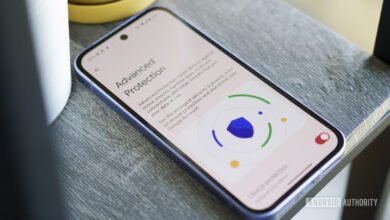Customer Engagement Is Now in Their Pockets

▼ Summary
– Modern customers expect seamless, personalized brand experiences across all channels rather than channel-specific interactions.
– Effective marketing requires orchestrating connected customer journeys that prioritize timing and trust alongside content relevance.
– Omnichannel customers are significantly more valuable, shopping 1.7 times more than single-channel customers according to McKinsey data.
– Messaging apps like WhatsApp are becoming primary customer communication channels, with 74% of online adults preferring business interactions that mirror personal messaging.
– Successful messaging integration focuses on strategic moments where immediacy and visibility matter most, while maintaining journey coherence through tools like Adobe Journey Optimizer.
Modern customers live seamlessly across every platform, expecting brands to meet them where they are with personalized and relevant interactions. Whether confirming a delivery, sending an appointment reminder, or sharing a genuinely appealing offer, the key to customer engagement lies in delivering timely, meaningful experiences that fit naturally into their daily routines.
Consider the shopper who fills a cart but never completes the purchase. A reminder email sent hours later often gets lost in a flooded inbox, and the chance to re-engage vanishes. Marketers today recognize that perfect timing and established trust carry as much weight as the actual message. The real challenge isn’t selecting one channel over another, but rather designing integrated journeys that honor customer preferences at every interaction.
Brands that successfully connect these journeys see measurable benefits. Research from McKinsey indicates that omnichannel customers shop nearly twice as often as those using only one channel. This statistic highlights a fundamental insight: the total experience drives value, not any single platform.
Messaging has moved from a secondary option to a primary expectation. People increasingly prefer to interact with businesses using the same simple, immediate tools they use with friends. Kantar found that 74% of online adults want to communicate with companies just as they do personally. Messaging apps see hundreds of millions of downloads monthly, with WhatsApp consistently leading. In one recent month, WhatsApp saw over 57 million global downloads. With more than two billion active users across 180 countries, it offers both enormous reach and a degree of user trust that is difficult to find elsewhere.
This doesn’t mean marketers should discard email, SMS, or push notifications, which remain vital. The real opportunity is integrating messaging into carefully planned customer journeys, making interactions quicker, more noticeable, and more pertinent.
Introducing messaging isn’t about increasing message volume. It’s about identifying the specific moments when immediacy, visibility, and trust are most critical. Effective omnichannel engagement happens when every touchpoint feels appropriate, timely, and welcome. For example, notifying a loyal customer they are close to reaching a new rewards tier has a much stronger effect when the alert appears instantly in a messaging app they frequently check, rather than sitting unread for days in an email inbox. The customer feels recognized, and the brand captures their attention.
These important moments can differ by region. In countries like Brazil, India, and Indonesia, WhatsApp often serves as the main communication channel for customers and businesses alike. In the United States or Canada, it might be better used for high-trust transactional updates rather than wide marketing campaigns. Leveraging journey analytics and regional knowledge helps marketers determine where messaging provides the most value, ensuring its use feels authentic and not intrusive.
Adopting new channels shouldn’t complicate operations. As messaging becomes a bigger part of engagement strategies, the goal is to maintain a connected and coherent customer journey. The ideal approach involves managing orchestration from one central platform, so every communication is coordinated and every interaction reflects a unified understanding of the customer.
Adobe Journey Optimizer allows WhatsApp to integrate natively into existing marketing journeys. This could include welcome sequences for new customers, re-engagement campaigns for inactive users, or post-purchase follow-ups. Messages can be activated by real-time behaviors, customized with customer profile data, and kept consistent across all touchpoints, all without increasing operational overhead.
The transition toward messaging-first engagement is already happening, presenting a clear opportunity for marketers. The future of customer experience will be shaped not by individual channels, but by how effectively they work together. With messaging now central to daily life and communication, the next step is deploying it in ways that benefit both customers and brands.
Every company will discover different points in the customer journey where messaging delivers the greatest impact. For some, it could be keeping customers informed with service updates. For others, it might involve re-engaging lapsed shoppers or reminding loyal customers about earned rewards. The crucial factor is thinking strategically about how messaging enhances existing channels to build a seamless, not fragmented, journey.
A new eBook delves deeper into this opportunity, illustrating how the WhatsApp channel functions within Adobe Journey Optimizer to reinforce omnichannel strategies without adding complexity. It provides real-world examples of messaging’s greatest impacts and actionable advice for identifying key moments, enhancing current journeys, and progressing toward more unified engagement.
Download the eBook to explore how Adobe Journey Optimizer and WhatsApp can help you design customer journeys that connect powerfully when it matters most.
(Source: MarTech)




